By Deborah Abernethy and Mike McLeod
$3,250 (10 bids, 8 bidders): Antique Kugel Christmas Ornament (red grapes).
“Kugel” is the name of thick, heavy glass Christmas ornaments that were made in Germany from as early as 1840 to the early 1900s. Although the word kugel means “round ball” in German, original kugels were also made in the shape of grapes, apples, pears, pine cones, berries, teardrops and balls with melon-style ribs.
From a collector’s standpoint, it’s all about color and shape combinations. With kugels, the color is in the glass, rarely painted on. A silver kugel, which is clear glass with only the silver lining showing through, is the most common. From silver kugel to rarest, the colors would be: gold, yellow-green, cobalt, blue and pinkish red being fairly plentiful; followed by the less common colors which would be the darker greens like moss and olive, copper/bronze, light blue; then getting into the rare spectrum of colors of deep red, burgundy, orange and the coveted amethyst.
These ornaments were in high demand in Europe where they originated, not only in Germany but in France as well. They made their way to the United States a few decades later. Woolworth’s, the popular five-and dime store, reportedly sold the first kugels to American shoppers in the 1880s. Kugels have a luster, weight and aged patina that many old Christmas ornaments just can’t match. They add sparkle and magic to any collection and will bring joy to you and generations of your family to come!
Approximate measurements: 4.25 x 2.75 inches (at the widest point.). Condition: overall good, used condition. No visible cracks or signs of damage. In great condition for its age (100+ years old). Just imagine all the Christmas mornings this ornament has seen!
(Photo: eBay seller reds_rusty_relics)
$3,800 (18 bids, 10 bidders): Brookfield Flat Top Emerald Glass Insulator and Original Bracket.
I have never seen this style of Brookfield insulator before. I could not find another like it on eBay or the Internet. It is a really nice, dark emerald color. It has a very blunt, flat top, and “Brookfield” is written across the top. Even rarer is that it comes with its original wooden and metal mounting bracket. It is in really nice condition.
(Photo: keystonecollectibles814)
In the early years, a variety of jars and bottles were the main part of the business. Electric insulators came later. A majority of insulators are aqua in color with the green being rare. The name Brookfield across the cap means it is an earlier one. I could not find one with this particular shape, and this may be why collectors were vying for it.
$417.59 (25 bids, 11 bidders): Antique circa 1900 American Folk Art Painted Double Squirrel Cage.
Constructed from thin pine, this late 19th century or very early 20th century squirrel cage is a wonderful Folk Art example. It measures 27 inches long by 16 inches tall by 8 inches wide, not counting the two 6-inch diameter by 9-inch tall wire cages. These cages do not revolve, and you can remove them easily. Both cages are in very good condition, but one cage is missing a wire hook at the top. There also is a missing pediment at the top of the center gable. Hand painted to look like brick, this Folk Art building/cage has a couple of small problems. There is a piece of wood missing from the gable’s roof and a shrinkage line to the main roof, near the left chimney. On the right, there is a place to hang a water bottle, and on the left of the building is a lift-up cover for the food. This antique American squirrel cage is in very good condition, and there are no restorations.
(Photo: eBay seller wwolst12)
Apparently, it was popular to keep small caged animals indoors in the 1800s. Most cages did have rotating components to watch the animal run. Some even were equipped with musical parts or other curiosities.
This price is average for the age and quality of this object.
$9,280 (69 bids, 18 bidders): Antique Arts & Crafts Marblehead Decorated Art Pottery Miniature Vase, Signed HT.
We were recently consigned three early pieces of Marblehead Art Pottery which are fresh to the market, out of an Arts & Crafts Bungalow home in New Hampshire. All three pieces are from the very early 20th century and have the early markings.
Although only one is signed “HT,” we do believe that all three examples of pottery are by this artist. At first, we thought these initials referred to “Hannah Tutt,” but after some research, we found that although many people attribute pottery to her, she was only a bookkeeper for the company and did not actually create pottery herself. We were unable to positively identify the artist of these three examples of Marblehead Pottery, but we have still listed them each separately and without any reserve!
Measuring only 4 ¼ inches tall, this Miniature Art Pottery vase was made during the very early 20th century by Marblehead Pottery. It has a classic Arts & Crafts decoration and a three-tone matte-glaze. Signed with the initials “HT” above the maker’s mark, this Marblehead Miniature Vase is in excellent original condition, with no restorations
(Photo: eBay seller wwolst12)


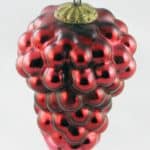
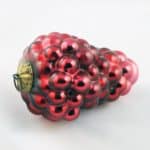
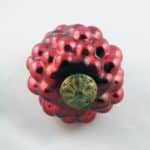
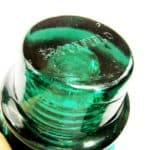

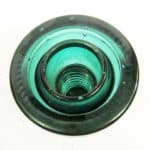

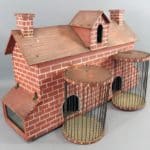
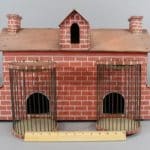
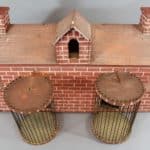
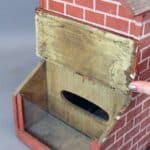
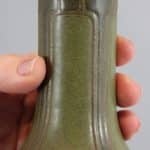
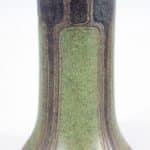
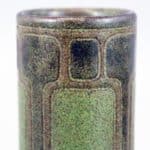
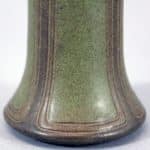
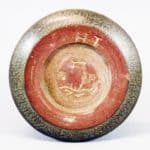
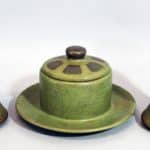



Related posts: